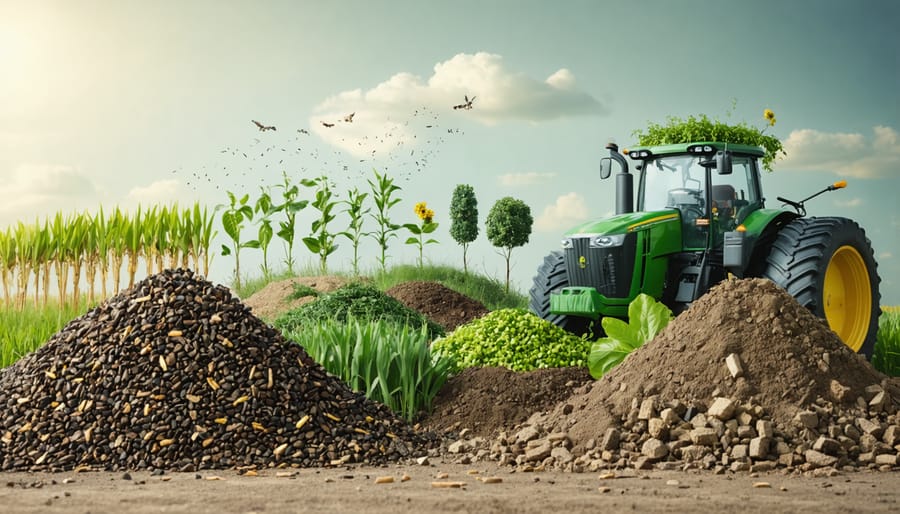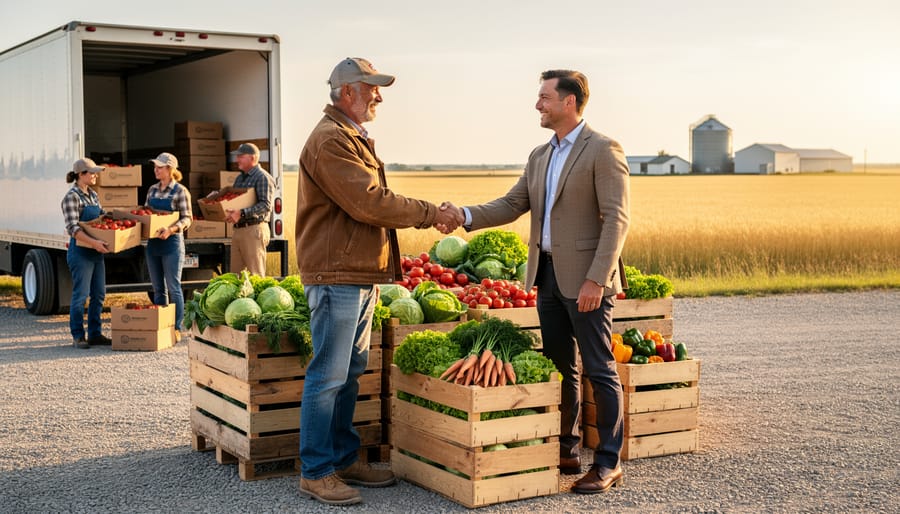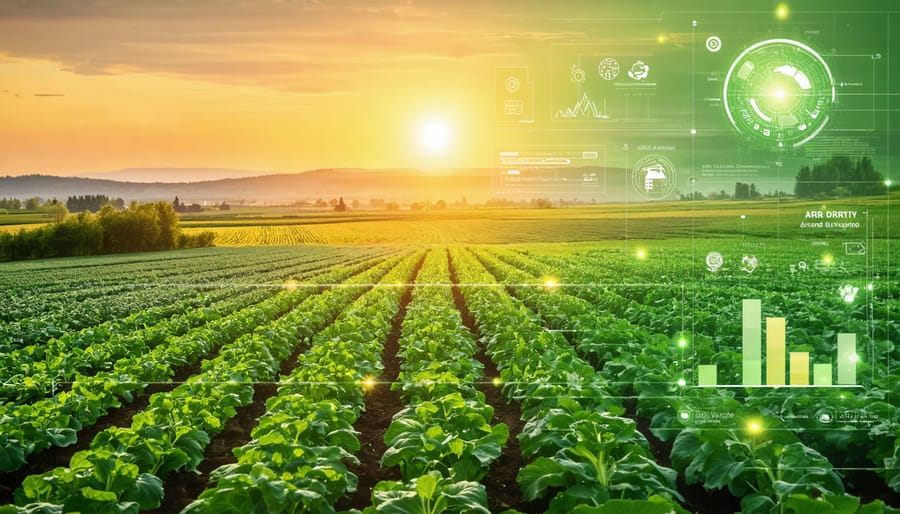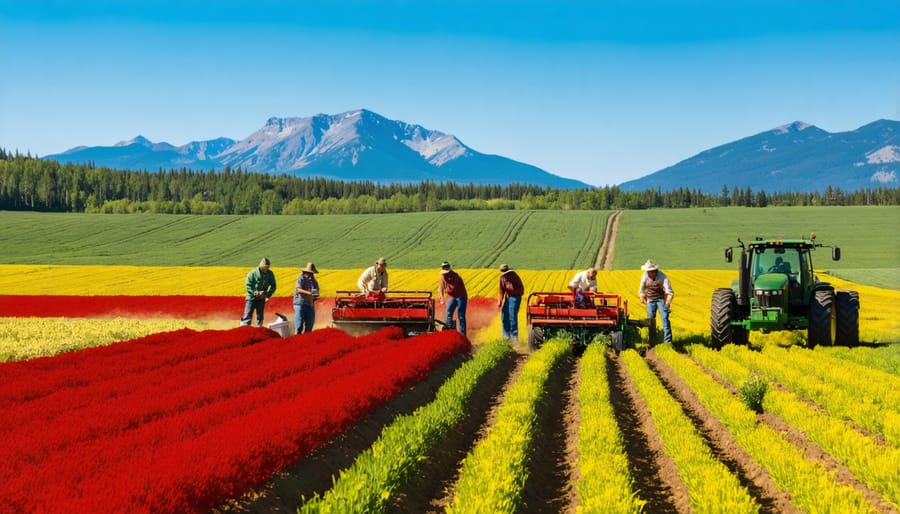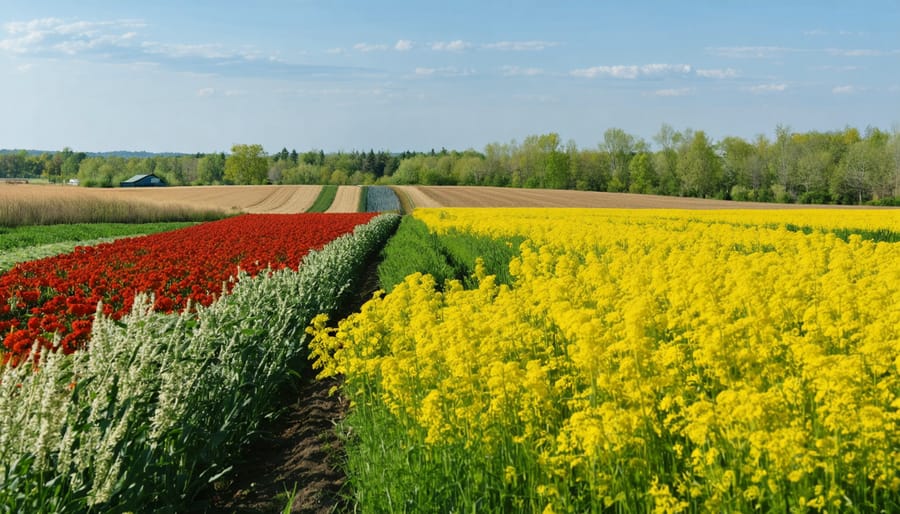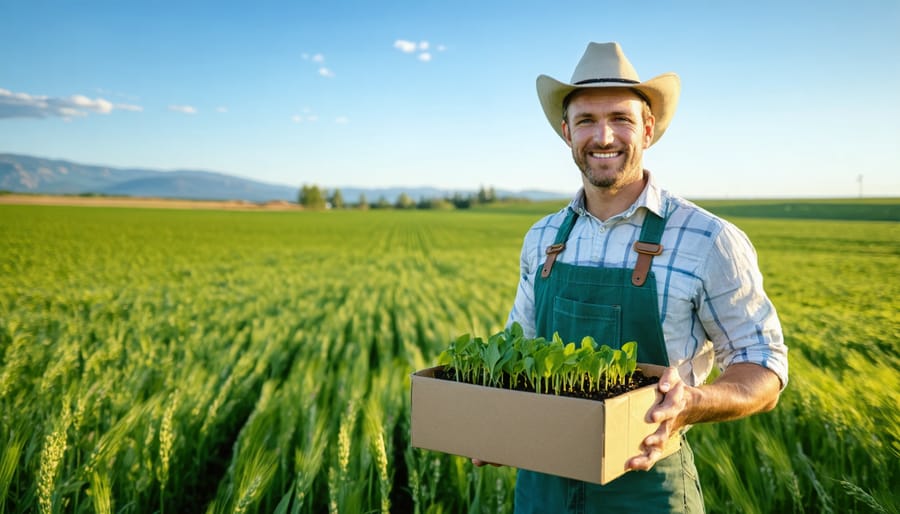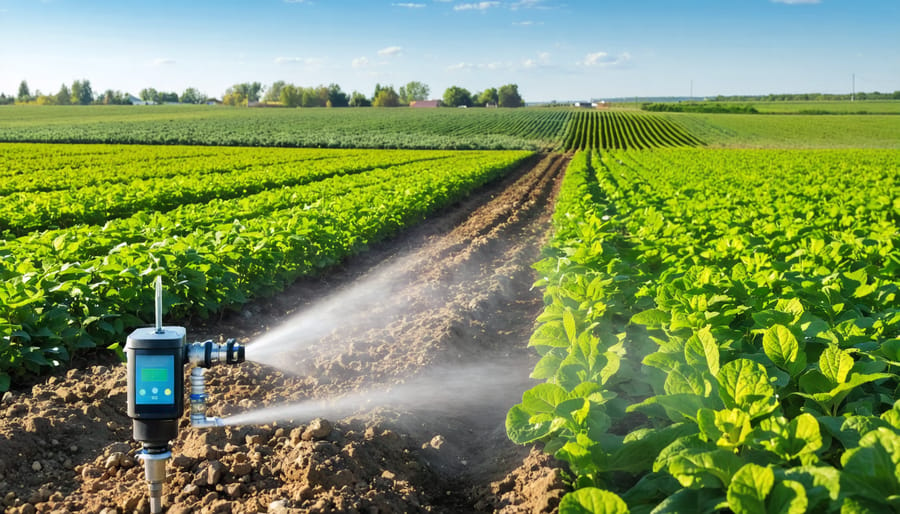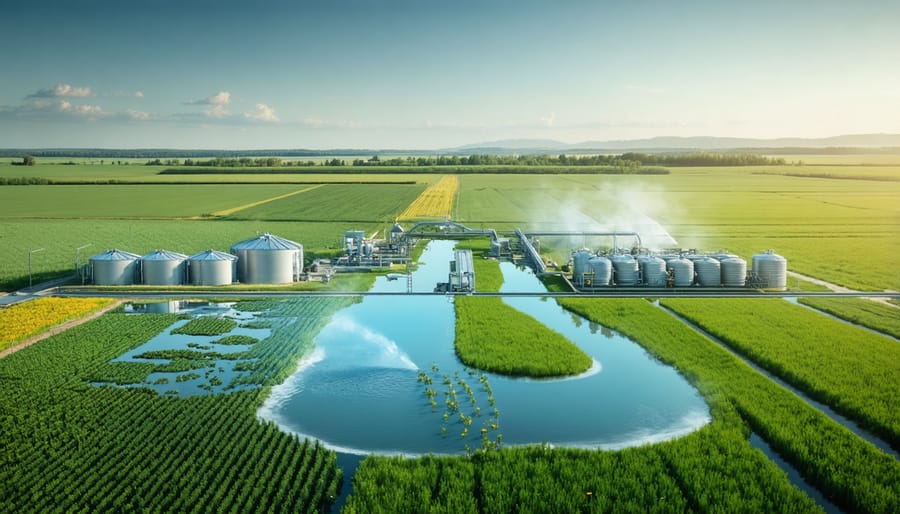Transform agricultural waste into valuable resources by implementing circular supply chains that connect local farms, processing facilities, and end-users. Canadian farmers are leading the way in innovative waste reduction strategies, proving that sustainable practices directly impact both environmental stewardship and bottom-line profits. From converting crop residues into biofuel to establishing regional composting networks, our agricultural sector demonstrates that waste reduction isn’t just an environmental choice—it’s a smart business decision. Recent data from Alberta shows that farms implementing comprehensive recycling programs reduce operational costs by up to 25% while creating new revenue streams through resource recovery. By adopting these proven waste reduction methods, agricultural operations across Canada are building more resilient and profitable farming systems for future generations.
On-Farm Waste Reduction Strategies That Work
Crop Residue Management
Transforming crop residue from waste into a valuable resource is a game-changer for Alberta farmers. Through effective management practices, materials like straw, chaff, and corn stalks can significantly boost soil health and farm sustainability.
Composting is a proven method that many Prairie farmers have successfully implemented. By mixing crop residue with nitrogen-rich materials like livestock manure, you can create nutrient-rich compost within 3-4 months. Local farmer Dave Thompson from Lethbridge shares, “We’ve cut our fertilizer costs by 15% since starting our composting program three years ago.”
Direct soil incorporation is another effective approach. Using conservation tillage equipment, crop residue can be worked into the top 10-15 centimetres of soil, improving organic matter content and water retention. This method has shown particular success in central Alberta’s dark brown soil zones.
For those looking to diversify, crop residue can be processed into value-added products. Several Alberta operations now produce biomass pellets from straw and husks, creating additional revenue streams while reducing waste. The Leduc Food Processing Centre offers guidance on exploring these opportunities.
Remember to maintain adequate ground cover when removing residue – aim to leave at least 30% coverage to prevent soil erosion. Consider your soil type, local climate, and crop rotation when developing your residue management strategy. The Alberta Agriculture Department provides free soil testing services to help optimize your approach.

Equipment and Packaging Solutions
Modern farming operations are discovering innovative ways to minimize waste through smarter equipment management and sustainable packaging solutions. Many Alberta farmers are extending equipment life by implementing preventive maintenance schedules and establishing equipment-sharing cooperatives within their communities. These practices not only reduce waste but also help manage costs effectively.
For packaging materials, successful strategies include switching to reusable containers for produce transport and adopting biodegradable materials for temporary storage. Local farmer Dave Thompson from Lethbridge shares, “We’ve cut our packaging waste by 40% simply by switching to returnable plastic containers for our vegetable deliveries to local markets.”
Consider these practical approaches:
– Use modular storage systems that can be easily repaired rather than replaced
– Partner with neighbouring farms to share seasonal equipment
– Choose bulk packaging options when purchasing farm inputs
– Implement a container return program with your regular customers
– Store equipment properly during off-seasons to prevent deterioration
Many Alberta agricultural suppliers now offer take-back programs for chemical containers and packaging materials. These initiatives, combined with proper equipment maintenance and smart packaging choices, create a comprehensive approach to waste reduction that benefits both the environment and farm operations.
Remember to keep detailed records of equipment maintenance and packaging material usage to track your progress and identify areas for further improvement.
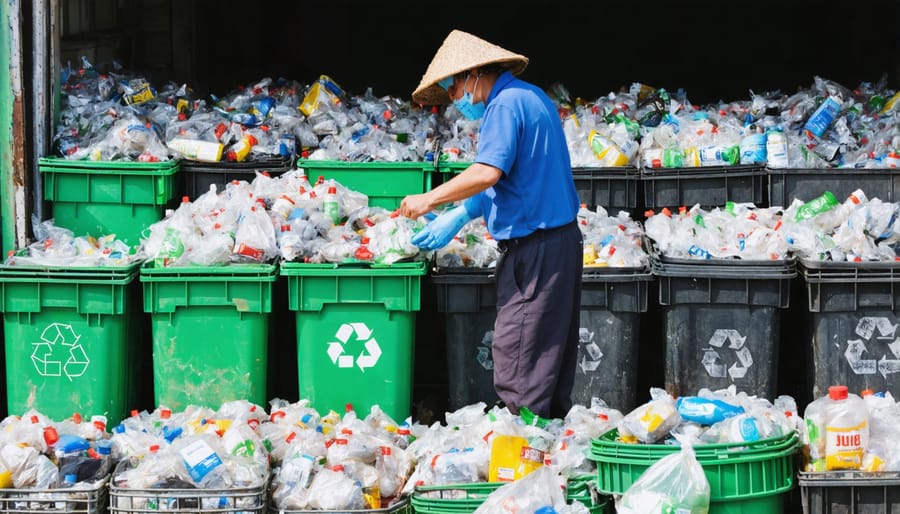
Alberta’s Success Story: The Richardson Family Farm
Located just outside of Camrose, the Richardson Family Farm has become a shining example of successful waste reduction in Alberta’s agricultural sector. Tom and Sarah Richardson, third-generation farmers, transformed their 800-hectare mixed farming operation into a model of sustainability through innovative waste management practices.
“We realized that what we considered ‘waste’ was actually a valuable resource,” explains Tom Richardson. “It was just a matter of changing our perspective and finding creative solutions.”
The Richardsons implemented a comprehensive waste reduction strategy in 2018, focusing on three main areas: crop residue management, livestock waste processing, and packaging reduction. Their most successful initiative has been their closed-loop composting system, which processes approximately 2,000 tonnes of organic waste annually.
The farm’s composting operation combines livestock manure with crop residues and food processing waste from local businesses. The resulting compost has significantly reduced their dependence on chemical fertilizers, saving the farm an estimated $45,000 annually while improving soil health.
To tackle packaging waste, the Richardsons partnered with local suppliers to implement a container return program. They now use refillable containers for pesticides and cleaning products, reducing their plastic waste by 75% compared to 2017 levels.
“The initial investment in waste reduction infrastructure was about $60,000,” Sarah notes. “But we recovered those costs within two years through reduced input costs and new revenue streams from compost sales.”
The farm also introduced innovative storage solutions for silage, switching from traditional plastic wrapping to reusable silage bags, cutting plastic waste by an additional 40%.
The Richardsons’ success has inspired neighboring farms to adopt similar practices. They regularly host farm tours and workshops, sharing their experiences and helping other farmers implement waste reduction strategies.
“What’s good for the environment can also be good for the bottom line,” Tom emphasizes. “It’s about finding that sweet spot where sustainability meets profitability.”
The Richardson Family Farm’s achievements have earned them recognition from the Alberta Farm Sustainability Award program and demonstrated that significant waste reduction is both practical and profitable in modern farming operations.
Smart Recycling Systems for Modern Farms
Setting Up Your Farm Recycling Program
Starting a farm recycling program doesn’t have to be overwhelming. By following these practical steps, you can create an efficient system that works for your operation while contributing to sustainable agriculture.
Begin by conducting a waste audit to identify your main recyclable materials. Common farm recyclables include pesticide containers, twine, grain bags, and plastic wrap. Track your waste for two weeks, noting types and quantities to help determine your recycling needs.
Next, designate specific collection areas on your property. Choose locations that are easily accessible year-round and protected from the elements. Consider setting up separate bins for different materials, and clearly label each container to prevent contamination.
Connect with your local Agricultural Fieldman or municipal waste authority to learn about available recycling programs and collection schedules. Many regions offer specialized recycling services for agricultural materials, including biodegradable farming solutions and container collection events.
Train your farm team on proper sorting and handling procedures. Create simple, visual guides showing what goes where, and post them near collection points. Consider appointing a team member to oversee the recycling program and ensure consistency.
Establish a regular schedule for emptying collection bins and transporting materials to recycling facilities. Many farmers find it helpful to coordinate with neighbors to share transportation costs and reduce individual trips.
Document your progress and adjust the system as needed. Keep records of the materials you’re recycling and celebrate milestones with your team. This data can also be valuable for demonstrating your farm’s environmental commitment to buyers and certification programs.
Local Resources and Support Networks
Alberta offers numerous resources and support networks to help farmers and agricultural operations manage their waste effectively. The Alberta Recycling Management Authority (ARMA) operates several province-wide recycling programs, including initiatives for tires, electronics, and paint. Farmers can access these services through local collection sites, which are strategically located throughout rural areas.
The Clean Farms program, specifically designed for agricultural operations, provides safe disposal options for pesticide containers, seed bags, and agricultural plastics. They organize collection events throughout the year and maintain permanent drop-off locations across the province.
Local Agricultural Service Boards (ASBs) serve as valuable information hubs, offering guidance on waste reduction strategies and connecting farmers with relevant recycling programs. Many counties also operate their own waste management facilities that accept agricultural materials and provide specialized recycling services.
The Alberta Farm Sustainability Extension Working Group (AFSEWG) offers workshops and educational resources focusing on sustainable waste management practices. They can help you develop a customized waste reduction plan for your operation.
For organic waste management, the Organic Alberta organization provides expertise on composting and biological waste processing. They regularly host workshops and maintain a network of mentors who can offer practical advice based on real-world experience.
Several regional waste authorities have established agricultural waste roundups, where farmers can dispose of various materials, from twine to chemical containers, at designated times throughout the year. Contact your local municipality or agricultural fieldman for specific dates and locations in your area.
Remember to check with your local county office, as many offer additional support services and may have grant programs available for implementing waste reduction initiatives on your farm.
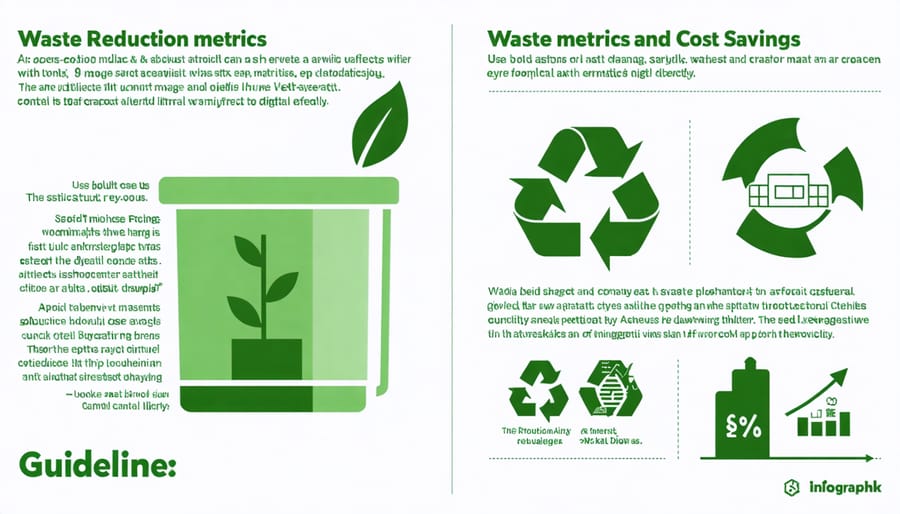
Measuring Your Waste Reduction Impact
Tracking your waste reduction efforts isn’t just about feeling good – it’s about measuring real impact and identifying opportunities for improvement. Start by conducting a waste audit: collect and weigh your farm’s waste over a typical week, categorizing items like plastics, organic matter, and packaging materials. This baseline data becomes your starting point for measuring progress.
Many Alberta farmers have found success using simple spreadsheet templates to track monthly waste volumes and disposal costs. Record keeping doesn’t need to be complicated – even a basic notebook tracking system can reveal valuable patterns in your waste generation.
Consider implementing these practical measurement tools:
– Waste collection logs: Document weight or volume of different waste streams
– Cost tracking sheets: Record expenses for disposal, recycling services, and new supplies
– Photo documentation: Take monthly pictures of waste collection areas
– Recycling revenue records: Track income from recyclable materials
When calculating cost savings, factor in:
– Reduced disposal fees
– Lower transportation costs
– Revenue from recycled materials
– Decreased purchasing costs from reuse practices
– Labour savings from streamlined waste handling
Several Alberta agricultural operations have reported 15-30% reduction in waste management costs within the first year of implementing tracking systems. Beyond the financial benefits, measuring your progress in reducing carbon impact can help qualify your operation for environmental certifications and grants.
Local agricultural extension offices provide free waste tracking templates specifically designed for Canadian farms. The Alberta Environmental Farm Plan offers additional tools and resources to help measure your waste reduction progress.
Remember to share your tracking results with employees and family members involved in the operation. This transparency helps maintain motivation and identifies areas where everyone can contribute to waste reduction goals. Consider setting quarterly targets based on your measurements and celebrating when you achieve them – success often inspires further improvements.
Regular monitoring also helps identify seasonal patterns in waste generation, allowing you to adjust your reduction strategies accordingly. Many successful Alberta farmers recommend reviewing your tracking data every three months to make informed decisions about waste management investments and process improvements.
As we’ve explored throughout this article, implementing effective waste reduction and recycling practices on your farm isn’t just environmentally responsible – it’s good business sense. The success stories from fellow Alberta farmers demonstrate that small changes can lead to significant impacts, both for your bottom line and our agricultural community’s sustainability.
Remember that starting small is perfectly fine. Begin with easily manageable steps like establishing dedicated recycling stations for common materials or implementing a composting system for organic waste. As you become more comfortable with these practices, you can gradually expand your efforts to include more comprehensive waste management strategies.
The resources available through local agricultural extension services and waste management facilities are there to support your journey. Many of your fellow farmers have already blazed the trail, showing that these practices are both practical and profitable in our unique Canadian agricultural context.
Take time this week to assess your current waste management practices and identify one area where you can make an improvement. Whether it’s properly disposing of agricultural plastics or finding new uses for crop residues, every step counts. Remember, you’re not just reducing waste – you’re investing in the future of your farm and our agricultural community.
Together, we can make Alberta’s agricultural sector a leader in sustainable farming practices while maintaining our competitive edge in the global market. The future of farming is sustainable, and it starts with the choices we make today.

